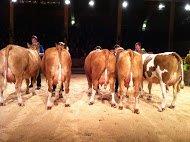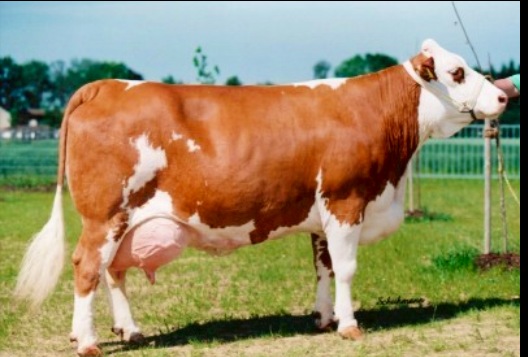How To Reduce The Causes of Mastitis
Mastitis is production-limiting, complex condition that can increase cull rates, veterinary visits and operating costs.
Management and environmental factors are important and one way to help reduce mastitis, lower somatic cell counts and get more lactations per cow, is by taking advantage of hybrid vigor with crossbreeding.
An indicator used as a standard measurement to assess the level of mastitis is the somatic cell count. This reflects the state of the herd’s udder health overall with an inflammatory cell count per mL of milk.
This is called Somatic cell count and it has an impact on milk quality, reflects sanitation practices on the farm as well as udder health. The lower the count, the better the milk quality. With a high somatic milk count, there are deductions from the milk price also.
New Technology To Measure Somatic Cell Counts
Somatic cell counts can be quickly determined with a simple, user-friendly hand-held device attached to an iPhone (check out http://www.dairyquality.com/). This allows early detection of Mastitis symptoms in dairy cows, permitting symptoms of mastitis to be treated early.

Environmental Causes of Mastitis:
- Feed and water quality and quantity;
- Rumen environment (poor quality silage);
- Insufficient hygiene in stalls or bedding
The Cow’s Role in Causes of Mastitis:
 Bad teats for example: Hyperkeratosis is a condition where the teat opening has formed extra tissue from milking and handling stress. This creates an easier portal of entry for pathogens.
Bad teats for example: Hyperkeratosis is a condition where the teat opening has formed extra tissue from milking and handling stress. This creates an easier portal of entry for pathogens.
Other causes of associated difficulties that can contribute to several types of mastitis in dairy cows
- milking since the teat canal ends up narrowing;
- Moist teats when entering parlor;
- Uncomfortable milking procedure that causes pain;
Poor milking machine maintenance causing teat damage or introducing infection may also be causes of mastitis in cattle.
The Role of Man in Causes of Mastitis

Insufficiently emptied udders ( should not have more than 300 to 500 ml milk left in the udder – this will ensure normal udder health and function)
Any residual milk, previous infections and cow parity may have negative these impacts on udder health;
- The entire udder feel after milking should be soft and pliable – any hard areas may reflect abnormality;
- It is paramount that clean gloves are being worn;
- Pre milking cleaning with clean cloths;
- Post milking teat dips;
- Routine teat condition supervision – by assessment periodically;
- Removal of mastitis cases from milking until recovered or at end of cycle;
- Specific inspections to look for teat abnormalities to assess risk;
Fleckvieh and Lower Somatic cell counts:
Many dairy breeds focus on the udder and its conformation. Fleckvieh has proven that also other traits when given attention produce an overall more powerful animal. Therefore they have a better immune system for example which can ward off infection like mastitis better.
The act of crossbreeding in itself takes advantage of hybrid vigor and specific genetic expression: The F1 generation of Fleckvieh bred with another breed shows lower somatic cell counts because the Fleckvieh influence by their character makes for a flat lactation curve. This will stress the udder less and helps reduce mastitis.
Lower somatic cell counts, less treatment costs, less penalties on milk prices and also a lower insemination rate right off the hop makes this a choice for many farmers to try Fleckvieh.